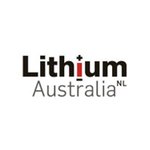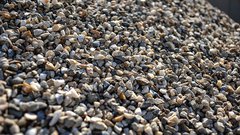Lithium Australia identifies abundant Li20 micas at Lepidolite Hill
Hey! Looks like you have stumbled on the section of our website where we have archived articles from our old business model.
In 2019 the original founding team returned to run Next Investors, we changed our business model to only write about stocks we carefully research and are invested in for the long term.
The below articles were written under our previous business model. We have kept these articles online here for your reference.
Our new mission is to build a high performing ASX micro cap investment portfolio and share our research, analysis and investment strategy with our readers.
Click Here to View Latest Articles
Following its announcement yesterday that it had finalised its acquisition of the Very Small Particle Company, Lithium Australia (ASX:LIT) has this morning informed the market it has found abundant lithium micas within the ore found at its Lepidolite Hill project.
Test work on ore-sorting products confirms LIT’s successful separation of lithium micas using an X-ray transmission ore-sorting method, which is supported by LIT’s 8 March announcement that successful separation was visually apparent in initial ore-sorting test work at TOMRA’s facility in Sydney.
Having undertaken chemical analysis on the product and waste streams, LIT found ‘successful partitioning of lepidolite lithium (more than 90%) in ore-sorting product versus ore-sorting reject material’. Ore-sorting product was found to be of grade 1.6% Li20 and the reject fraction was of grade 1.8% Li20.
What’s important to note is that beneficiation of the materials via ore-sorting could go a long way towards enhancing the economics of LIT’s various projects, including its large-scale pilot plant.
According to the company, the unexpectedly high lithium assay in the waste ore likely indicates the presence of petalite which has physical characteristics similar to other minerals being rejected by the ore sorting process. As an aside, during the 1970s petalite was commercially produced from Lepidolite Hill for use in the ceramics industry.
LIT will undertake further analysis, including the use of quantitative X-ray diffraction, to determine the presence of petalite. If this is confirmed, it would be good news for LIT, who could potentially use petalite for as an additional revenue stream.
Overall this is an early stage play and as such any investment decision should be made with caution and professional financial advice should be sought.
On the basis of the above results, LIT is encouraged by the potential to not only separate out petalite, as well as lepidolite, from surface stockpiles but also to undertake further exploration at the project.
LIT managing director Adrian Griffin commented on today’s announcement: “Although our aim at Lepidolite Hillis exploitation of lithium mica, it's not surprising to find such abundant petalite in the mine dumps.
“Lepidolite Hill operated as a petalite mine in the 1970s, and perhaps the recovery of the target minerals was not as good as the operators would have liked! Ore-sorting will certainly enhance rapid separation of the lepidolite.
“That said, we'll also devote significant attention to the recovery of other lithium minerals that result in a grade of about 1.8% Li2O in the reject material. We'll probably drill at the south end of the existing pit, to see how far the lithium mineralisation extends beyond what was left in the pit wall.”
General Information Only
S3 Consortium Pty Ltd (S3, ‘we’, ‘us’, ‘our’) (CAR No. 433913) is a corporate authorised representative of LeMessurier Securities Pty Ltd (AFSL No. 296877). The information contained in this article is general information and is for informational purposes only. Any advice is general advice only. Any advice contained in this article does not constitute personal advice and S3 has not taken into consideration your personal objectives, financial situation or needs. Please seek your own independent professional advice before making any financial investment decision. Those persons acting upon information contained in this article do so entirely at their own risk.
Conflicts of Interest Notice
S3 and its associated entities may hold investments in companies featured in its articles, including through being paid in the securities of the companies we provide commentary on. We disclose the securities held in relation to a particular company that we provide commentary on. Refer to our Disclosure Policy for information on our self-imposed trading blackouts, hold conditions and de-risking (sell conditions) which seek to mitigate against any potential conflicts of interest.
Publication Notice and Disclaimer
The information contained in this article is current as at the publication date. At the time of publishing, the information contained in this article is based on sources which are available in the public domain that we consider to be reliable, and our own analysis of those sources. The views of the author may not reflect the views of the AFSL holder. Any decision by you to purchase securities in the companies featured in this article should be done so after you have sought your own independent professional advice regarding this information and made your own inquiries as to the validity of any information in this article.
Any forward-looking statements contained in this article are not guarantees or predictions of future performance, and involve known and unknown risks, uncertainties and other factors, many of which are beyond our control, and which may cause actual results or performance of companies featured to differ materially from those expressed in the statements contained in this article. S3 cannot and does not give any assurance that the results or performance expressed or implied by any forward-looking statements contained in this article will actually occur and readers are cautioned not to put undue reliance on forward-looking statements.
This article may include references to our past investing performance. Past performance is not a reliable indicator of our future investing performance.






